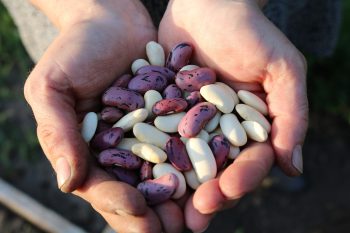posted October 31, 2023

There is often more than a single route to a destination. The coastal road may yield better views but be less time-efficient than the inland highway.
Similarly, there is more than one way to transition to a vegan diet. Despite all the benefits of a vegan diet, the change also involves a degree of sacrifice—giving up certain patterns and habits related to food. Like checking Google maps before a trip, having a plan for this transition can make it less overwhelming.
Pros and Cons of Going Cold Tofurkey and The Taper
1. Going Cold Tofurkey
This is the approach exemplified by many vegan documentaries, like Cowspiracy, where you clear all animal products out of your pantry the next day. One day you’re Customer of the Month at McDonald’s, and the next day you’re figuring out how to press tofu.
PROS:

- Fosters Identification: Choosing to identify as a full-fledged member of a group brings support that can be especially meaningful during the onset of a transition.
- Demonstrates a High Level of Commitment: Restocking the entire pantry and canceling your Omaha Steaks subscription shows family and friends (and yourself) that this is not an idea born from a boring rainy afternoon, nor another fad diet. Note: Programs such as the 21-Day Vegan Kickstart from the Physicians Committee for Responsible Medicine are helpful guides for the initial days of your commitment.
- Limits Reinforcing Effects: Habits are maintained, at least in part, by reward-circuitry in our brains. If trying to break the habit of consuming animal products, becoming completely free of them eliminates the reinforcers of that particular circuit. Anyone who has ever made and broken the promise that they will have “just one potato chip” should understand the magic of going “cold Tofurkey.”
CONS:
-

Photo credit: Pexels from Pixabay Steep Learning Curve: It is possible to plan and commit to a date on which you will switch completely to a vegan diet, but “cold Tofurkey” decisions are often made with less forethought. This can set one up to feel underprepared and overwhelmed, not only in terms of the practical basics (How will you supplement Vitamin B12? Do you know how long to soak beans?) but also with the social navigation (Is the whole family going vegan? What are you going to do at the family wedding next week?).
- Detoxing: Whether it’s due to an increase in fiber intake or to a “detoxing” of the simple sugars, processed foods, and animal products that had made up one’s previous diet, people can experience physical symptoms during this transition. Considering the reward-circuitry noted above, there can be psychological withdrawals too. The risk of such effects is higher with the abrupt changes of the cold Tofurkey approach.
2. The Taper
A taper may mean eliminating certain foods (meats, milk, cheese) in a stepwise process over time. Or it can be achieved by following a vegan diet on certain days of the week, increasing the frequency of your vegan days over time.
PROS:

- Easier Physical Adjustment: A stepwise approach is easier to adapt to, both physically and psychologically. Compare it to starting a running program—your body will rebel less if you start with a one-mile jog rather than tackling a half-marathon on the first day.
- Extended Learning Period: The taper approach allows more time to research (supplements, recipes, restaurants, and food-prep services) and to experiment (not all vegan protein powders are created equal!), which can be helpful with meal planning, grocery shopping, and ensuring that you are filling your nutritional needs.
CONS:
- Continued Reinforcing Effects: Continuing to feed the reward-circuitry that responds to animal products—even at lower rates or with fewer foods than previously—can still have reinforcing effects, making it harder to cut the cord completely.
- Maintenance Costs: It can be challenging to maintain two different diets, considering:
- Cost of groceries for two diets
- Rules: Selecting and committing to which days you will eat vegan—or figuring which food group to switch out first. Will you change the rules if you are going to a party or traveling? What do you say when asked about dietary restrictions?
Regardless of how you get there, the transition to a vegan diet will bring boundless rewards physically and emotionally, while saving animals and reducing one’s carbon footprint. Wishing you happy travels!

Vegetarian since 2005 and vegan since 2013, Jessica Langenhan, MD, is a Board-Certified psychiatrist based in Southern California. Having learned basically nothing about nutrition in medical school, she has followed an individualized curriculum in plant-based nutrition not only to enhance her own journey but also to allow her to guide her patients in making lifestyle changes.
She is a certified vegan lifestyle coach and educator through Main Street Vegan Academy, and she has received certification in plant-based nutrition through the T. Colin Campbell Foundation Center for Nutrition Studies. Jessica is a member of the Physicians Committee for Responsible Medicine and completed the 200-hour certification for teaching yoga (RYT 200) in 2018.
In addition to baking, Jessica’s hobbies include reading, running, taking OrangeTheory Fitness classes, practicing yoga, and making jewelry. Connect with Jessica through LinkedIn.

